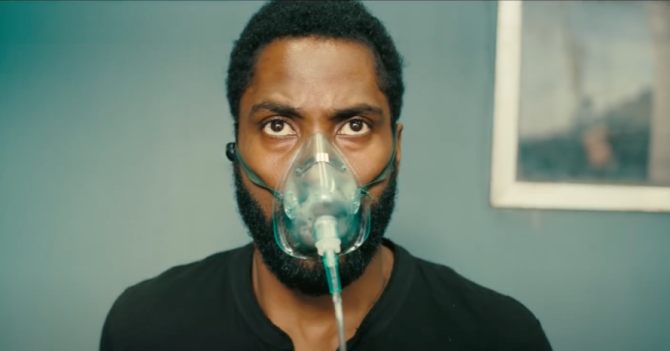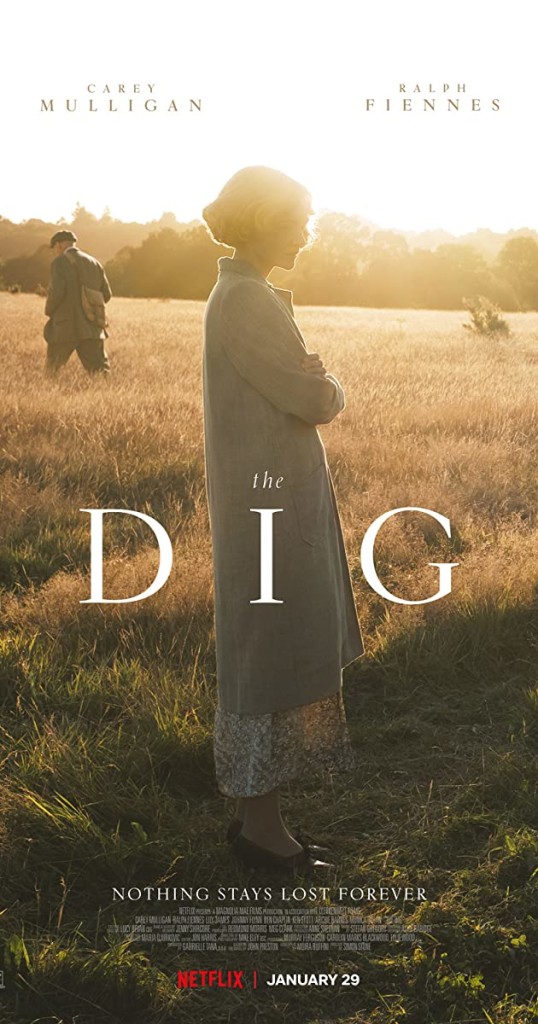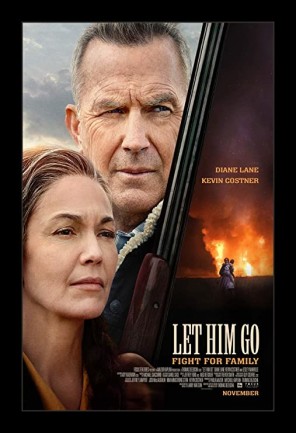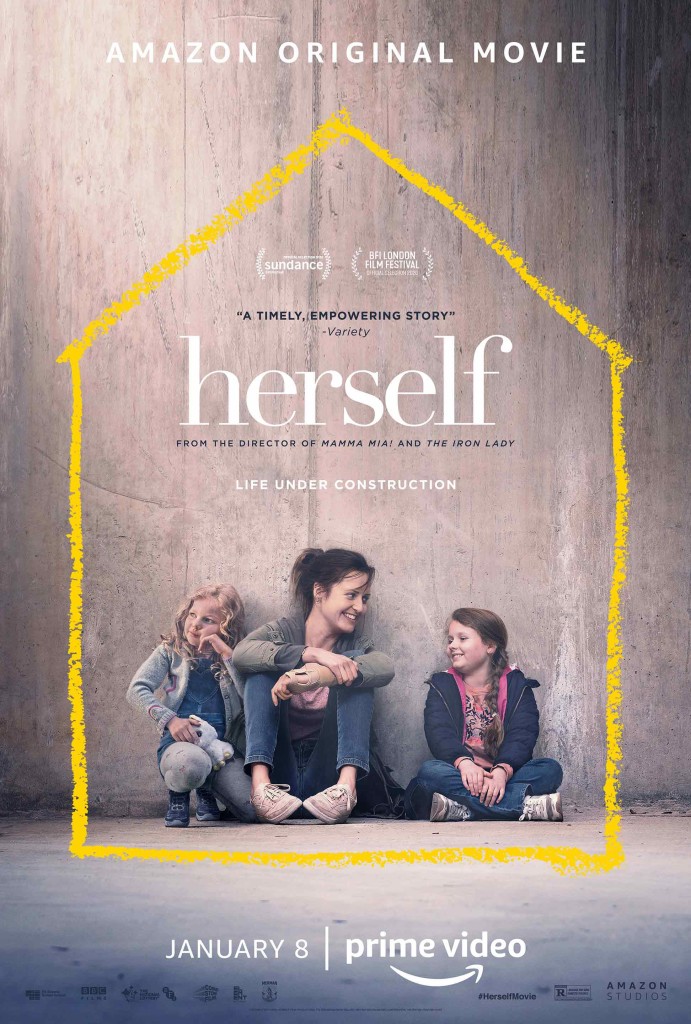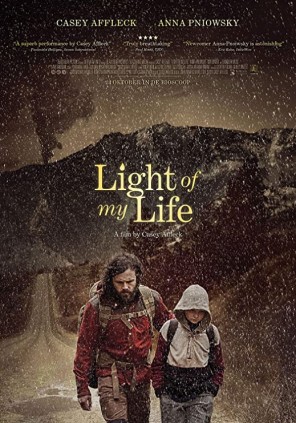One of the projects I’m developing as a producer is a tennis movie. For those who read the site regularly, you know I’m a big tennis fan, so it’s only natural that I’d have a tennis movie on my slate. We can go into the specifics of how marketable a tennis movie is at a later date. But for now, we’ll stay on topic.
In researching other tennis movies, most of which have been failures, I came across this 1995 tennis movie called, “The Break.” The Break is a really bad movie. It’s about a former tennis player turned teaching pro who mentors a young prodigy during his first year on the tour. You can experience some of the movie yourself here, although I wouldn’t recommend it.
The Break has a lot of script problems. The main character – the coach – is too on-the-nose. The plot, which involves gambling for some reason, is overwritten. And the tone is all over the place. One second it wants you to take it dead serious. The next it wants you to treat it like a Farrely Brothers comedy. Watching the film is a frustrating reminder of how easy it is to make a terrible movie.
As I continued my research, I looked to other successful sports movies to see how they did it right. Eventually, I was reacquainted with Bull Durham. Bull Durham is an interesting film. It’s quintessential late 80s/early 90s and already feels pretty dated when you go back and watch it. But one thing is clear. The movie works. That’s all you’re asking for as a writer, director, or producer. Does the movie work? And Bull Durham works really well.
But that’s not what I was focused on. What I was focused on was the fact that, as I watched Bull Durham, I realized that The Break was a total ripoff of the film. Everything from the sports angle, to the mentor stuff, to the [attempted] tonal balance between drama and comedy. Heck, the main character in The Break even copied Kevin Costner’s 5 o’clock shadow and Bon Jovi haircut.
The difference between the two films was that Bull Durham was just better. Everything about it worked better. Most importantly, the writing itself. It was more sophisticated, less cliche, took more chances, had better jokes, understood character dynamics better, conveyed the eccentricities of its sport better. It was better in every way.
That experience reminded me of one of the biggest mistakes screenwriters make: They are slaves to the moment. In fact, I would say that every screenwriter IN HISTORY has made this mistake at least once. And most of them continue to make it. We allow the generation of our ideas to be influenced by whatever the latest fads are. As such, we come up with stuff that can be categorized as “just like everything else out right now.” There’s actually a term for this. And I’m going to give you that term in a moment. But before we get to it, let’s discuss the two types of idea generation philosophies you want to be using.
WHAT’S OLD IS NEW AGAIN
This is one of the best ways to create fresh ideas. You take something that hasn’t been around for a while – a situation, a character, a setting, a concept – and then you bring it into the present, preferably with a spin. This is what Star Wars famously did. Westerns were becoming old hat. So Lucas created a space-western. We saw it with one of 2019’s biggest pictures, Joker. That was basically a reimagining of the 1982 movie, The King of Comedy. Todd Phillips found his spin by putting a famous DC comics character in it. Same for 2017’s Get Out. That was “Guess Who’s Coming To Dinner” with a modern horror twist. “What’s Old is New Again” is a great way to generate ideas.
WHAT’S NEW IS NEW AGAIN
“What’s New is New Again” is another good way to generate ideas. This is when come up with a truly new and fresh idea. Something that hasn’t been done before. Because you’re competing against a century of movies, going this route can be challenging. “New is New Again” ideas often involve new technology. Newer ideologies. New stories in the media. New cultural shifts. I would argue that The Matrix was a “What’s New is New Again” idea. Some people may say we’ve done versions of The Matrix before but I’d push back on that and say the large majority of it was something fresh. Ditto Jurassic Park. We’d never seen a dinosaur island idea before. A lot of Black Mirror episodes feel “new is new” to me.
WHAT’S NEW IS OLD AGAIN
This is what I was referring to with “The Break” versus “Bull Durham.” And it’s the mistake most writers make when coming up with an idea. They see the latest hit movie in the theater or they track which movies are doing well at the box office and they come up with an idea that’s similar to them. For example, if someone saw Tenet, they might come up with an idea about heading backwards in time against the grain of everyone else moving forwards in time. It certainly FEELS like a new idea due to the fresh “new” feeling you got while watching Tenet. But six months later when you begin sending the script out, everyone’s going to say “This is just like Tenet.”
Yes, you want to understand what’s trending in the industry. But you must be careful about being too influenced by the current slate of popular movies. Unless you get in at the very beginning of the trend, by the time you send out the script, it’ll be old hat. A lot of people called Bird Box a ripoff of A Quiet Place. Instead of not being able to make a noise, you’re not able to look at things. But the reason Bird Box still did well on Netflix was because it was well into development by the time A Quiet Place came out. So they were able to get it out there immediately, when a “sensory” horror movie still felt fresh. If you, the unknown screenwriter, started writing a “Quiet Place” clone immediately after the movie came out, you’re already racing against time. Every single day, your idea gets more stale. It’s not a pleasant place to be.
There’s a final category that’s not worth getting into since it’s obvious. But I’ll mention it anyway. “What’s Old is Old Again.” This is when you take an old movie and basically write the exact same movie. You’re not bringing anything new to it. Writers sometimes make the mistake of believing an “old is old again” is actually a “old is new again” situation. They believe they’ve created a fresh twist but the twist is too subtle, or not enough to make the idea feel new. So you want to watch out for that. Ask yourself if you’re TRULY bringing something new to the old idea. But I think this category speaks for itself. Don’t do it.
You should be focusing on the two best ways of coming up with an idea – “old is new again” and “new is new again.” They’re more likely to garner a response (assuming that your idea is actually good, lol).
With that said, I don’t want to scare you. Coming up with ideas is hard enough and here I’m saying, “Do this and don’t do that or you’re screwed!!” I concede that there’s a fifth option. And that’s when you come up with an idea that just “feels right.” It may violate some of the things I’ve warned you about here. But the idea excites you for some reason. On Tuesday I reviewed a script called “Towers” about a family man who wants to build a club on the top of his company’s building and later gets into drag-racing. I’m not sure what category that idea falls into but something about it excited the writer and that ended up getting him a lot of attention. So there is an element of following your gut here. Use these categories I’ve discussed above as a guide, not as gospel.
Good luck! :)
Genre: Drama/Thriller
Premise: After a real estate agent in the richest suburb in America is brutally murdered in a home she was showing, a Boston detective zeroes in on her dangerous ex-boyfriend.
About: This will be Grant Singer’s official feature directing debut. Singer is best known for directing Super Bowl singer, The Weekend’s, videos. You can see one of those videos here. Singer co-wrote the script with Ben Brewer. The film will star Benicio Del Toro.
Writer: Grant Singer & Ben Brewer
Details: 127 pages
Guys, before we get started, SEND ME THE SCRIPT TO BULLET TRAIN (carsonreeves1@gmail.com). I have to find out what’s attracting all these actors to this movie. Most scripts have 1 or 2 juicy parts. Outliers have 3 or 4. But for a script to have this many interesting characters that they’ve nabbed this many big actors?? I have to know what’s going on. So send it to me! I will buy an animal style double-double from In and Out in your honor.
Okay, on to today’s screenplay.
I went into this script not knowing much about it. When I began to realize it was a murder investigation story, I tensed up. These are incredibly difficult stories to do anything new with. You’re not only competing with similar movies that came before it. But a good 70 years of television has been covering this genre as well. I mean, how are you going to come up with any murder scenario that’s unique at this point?
For this reason, these scripts tend to depend on the strength of their characters. The characters have to be above and beyond your average movie characters if the script is even going to sniff ‘decent’ territory. Let’s find out if Reptile was able to achieve this.
30-something Will Grady is the kind of rich you only become if you were born into money. And Will was definitely that. His mother, Camille, is richer than anybody in town. She’s also attached to Will at the hip. If you marry Will, you marry his mother.
Which is probably why Will’s wife, Summer, is so bummed out. It seems like every occasion she and her husband attend includes Mommy Dearest. Well, that’s not going to happen much longer. Cause when Summer (who’s a real estate agent) goes to show a new house, she’s brutally murdered inside of it.
Local detective and all-around good guy, Nichols, comes onto the case, and the immediate suspect is Summer’s ex-boyfriend. Word around town was that he always used to beat her up. Feels like an open-and-shut case. But the further Nichols digs, the more complicated things get.
For example, every one of the houses Summer has sold this year is currently empty. She may have been involved in a scam whereby she helped wealthy criminals launder money. And, if that’s the case, it means the ex-boyfriend is the least of Nichols’ worries. In fact, the more Nichols keeps pushing, the more he realizes no one wants to help him – even his own police department. Could they be involved in this?
Just when things can’t get any worse, Nichols learns that some podcaster is out there chronicling the case in real time, giving the potential bad guys important information that can help them win their case, should it go to trial.
But Nichols pushes on and eventually learns that the companies who have been buying all these houses from Summer are connected to Will’s mom herself! Is she the one who murdered Summer? Or could it be someone close to her?
Reptile suffers from the problem I noted at the outset. It’s not giving us anything new. There was one tiny moment where Nichols confronts the podcaster where I thought, “Okay, I’ve never seen this before.” But, in the end, it was no different from detectives having to fend off traditional media. It was just that the form of the media was new.
With that said, the script is pretty good. It’s certainly better than the last movie that came out in this genre – The Little Things – because, ironically, it does a lot of the little things differently. For example, we spend a lot of time inside the crime scene throughout the first three-quarters of the screenplay, and the writers deliberately don’t show us the body. They keep hinting at how horrific the murder is, which does a wonderful job of keeping the reader turning the pages. The longer you don’t show the crash, the more we’re going to want to see the crash! So that was smart.
Also, the relationship between Will and his mother felt different. I’m sure one of these crime procedural shows have done a mommy-son suspect thing before. But there was something fresh about this emasculated husband that made him interesting. We find out, at some point, that Summer was still sleeping with her ex-boyfriend, the guy who used to beat her. So the fact that this woman was resisting a “perfect” life to be with this abusive terrible person made the characters a bit more complex.
I found myself wondering what I was supposed to feel. I didn’t like the husband, Will. And, of course, I didn’t like the ex-boyfriend. But, in a way, I didn’t like Summer either. Because she was cheating on her husband to willingly be with this man who abused her. It didn’t exactly endear me to her. Yet when you were in a room with Will and his mom, you could see how someone would perceive that as a living hell. So you kind of sympathized with her choice as well.
I give the script credit for that. It makes you think. And it makes you think about uncomfortable things.
But the script was plagued with a lingering messiness that, like a groundhog, kept peeking its way above the surface. Important information wasn’t always presented clearly. For example, the first thing we’re told when Summer is showing this house is that all the houses on the block are empty. So what does that tell you? That this is a poor neighborhood, right? Everybody went bankrupt and left town. The suburb is dead.
However, 70-some pages later, another detective casually mentions that this is the richest suburb in the entire nation. Uh, what? How was I supposed to know that? Little blips like that would show up every 20 pages or so that kept me from really being able to invest in the story.
I also think this is an example of having a certain vision of what you want to do in a script and not changing that vision when it’s clear that certain things aren’t working. The podcaster guy had some interesting moments. But he had no broader connection to the story. In other words, if you got rid of him, nothing else in the story changes. This is all about Nichols. It’s his investigation to win or lose. The podcaster is an annoyance. And with the script being 127 pages, you can probably excise 15 of those just by getting rid of him.
Remember. You only want to include things in your story that push it forward. If characters aren’t pushing the story forward, you have to decide whether to keep them or not. Good writers are able to make that difficult call. They don’t want to get rid of characters they like and that they’ve spent so much time developing. But they know it’s best for the story.
If you’re into slow dark murder investigation movies, you’ll probably like this. Despite its occasional messiness and familiarity, the plot has been well thought-out and, therefore, results in a satisfying climax. It ain’t going to break any streaming records. But it’ll be worth watching.
[ ] What the hell did I just read?
[ ] wasn’t for me
[x] worth the read
[ ] impressive
[ ] genius
What I learned: Extremes help a logline. If you can say that something in your idea is the “biggest,” “the most dangerous,” “the richest,” “the most decorated,” “the CEO of the most successful company in the United States.” Extremes like that add weight to your idea. Cause you’re not just talking about any old thing. This is the biggest, the best, the most important! That’s why people pay attention. “After a real estate agent in the richest suburb in America is brutally murdered in a home she was showing, a Boston detective zeroes in on her dangerous ex-boyfriend.”
Genre: Drama
Premise: (from Black List) A businessman’s obsession with his competitor leads him down a rabbit hole of self-discovery, fantasy, and delusion.
About: This one finished low on last year’s Black List. The writer, Aaron Rabin, has been making short films and writing for over 15 years.
Writer: Aaron Rabin
Details: 115 pages
As I pointed out yesterday, I’ve been having trouble finding movies to watch. This has led me down some strange paths where I’ve taken chances on movies that I’d normally ignore. One of those movies was a film called, “The Nest.” It starred Jude Law as a family man who enjoys the finer things in life, but doesn’t tell his family when he starts hemorrhaging money, resulting in him trying to live way above his means. Eventually, it catches up to him and his family, forcing him to finally tell them the truth.
Going off of that synopsis, you’re probably imagining an engaging story. There’s lots to work with there from a plot standpoint. But the writer/director made the classic writer/director mistake of lingering on every single mundane moment (lots of staring out at pretty scenery in this one) until it sucked every ounce of drama away. What we were left with was a moody piece that occasionally decided, “Oh, let’s add a plot point here.” And by ‘occasionally’ I mean every 25 minutes or so.
As a writer, these moody ‘tone poems’ as George Lucas once called them, are limited in their appeal. You get the hardcore cinephiles cheering you on and not much else. It’s been my belief that you can’t help these scripts. They’re doomed to be their inert selves. That was until I read today’s script, “Towers.”
40-something Jeff Armstrong works at a generic medium-height downtown building. We’re not told what his job is. It’s one of those generic job titles inside large corporations that don’t mean anything. Which is probably why his company is dying. It can’t even define its own workers.
Every day, Jeff stares over at the building across from them. It’s a giant blue tower that makes his building look pitiful. Jeff is convinced that he can change the course of his company and tells his boss, Clarence, how. He wants to build a club on top of the building, just like the blue tower has. But this one’s going to be better. It’s going to change the game.
Meanwhile, one day while Jeff is doing errands, someone steals his boring blue Dodge car. When Jeff gets home, he gets even worse news. His daughter, Mona’s, doctor believes she has leukemia. Strangely, Jeff is not concerned about his daughter’s health. He’s more focused on the fact that his company stopped their health insurance coverage last year. If Mona has cancer, treatment will be coming out of his own pocket.
After Jeff argues with his overweight wife, Serena, about how they’re going to pay the bills, he finally gets some good news. They found his stolen car. However, a group of street racers did the whole thing up so now it’s a flashy street racing car. Jeff is both horrified and intrigued. Driving the car around gives him a new sense of confidence, which he parlays into an affair with Catherine, the city planner overseeing his ‘club’ plan.
Eventually, Jeff comes up with an idea. He sees a group of drivers racing cars late into the night at a local impromptu speedway. They are offering 100,000 dollars to the winner of an upcoming race. If Jeff can somehow win that race, he’ll be able to put a down payment on the most expensive cancer treatment for his daughter, potentially saving her life. Jeff is in, to the bafflement of just about everyone he knows.
“Towers” is a script that shouldn’t have worked.
It’s written with that same character-driven vague narrative that The Nest used. At least at first. Everything about the story is vague. For example, Jeff will come into his boss’s office and ask him about the “investment” they both made. His boss will get a very serious look on his face, as if to say, ‘don’t bring that up,’ and Jeff will drop it. And that will be the scene.
Ditto the club. I wasn’t even sure what kind of club it was at first. He just kept referring to it as the “club.” A sports club? A rich people’s club? All of this was done on purpose. We’re not meant to know the details. And usually that bothers me. So I wondered why it didn’t here. I finally came to the conclusion that it’s because, unlike The Nest, Towers had a plot.
That plot was developed in three areas:
The first was Jeff wanting to create this club. This meant that, right off the bat, our hero had a goal. And it was a goal he cared about (even if we didn’t know what it was ourselves at first). What this does is it makes your hero active from the start. Active heroes are plot-movers. If they’re trying to get something, they organically pull the plot along with them.
Next, we have an “in” plot point. You might remember this from my article titled “In and Out,” – how it can help you become a better screenwriter. In that article, I say that there are two types of plot mechanics. You have the ones where your hero pushes OUT on the world (like the example I used above, with the club). And then you have the ones where the story pushes IN on the hero.
Here, we get our ‘IN’ when Jeff’s daughter gets a cancer diagnosis. This is now something your hero will have to deal with throughout the rest of the movie. ‘Dealing’ with anything creates plot. So you’ve now got two plotlines pushing the story along.
Finally, we have the car race. That becomes the big final goal of the movie. Jeff’s trying to win this race to save his daughter’s life. Stakes don’t get much higher than that. This is where Towers separates itself from other indie fare. Typically, the end of one of these movies is some late-starting half-realized low stakes affair. Towers is anything but that. Rabin started meticulously setting up this plotline in the first act, when Jeff got his car stolen.
Still, you’re not sure what to make of this script. It’s so understated and hides so much of its soul beneath its surface that a lot of it feels like a dream. It’s an interesting dream. One of those dreams you don’t want to wake up from. But it carries some of that weird dream-like logic where, afterwards, you’re not sure why you bought any of it. I mean, this guy becomes a street-racer despite never having raced a car. I don’t know. It’s trippy. But it somehow works.
If you’re someone who wants to understand how to write scripts with voice, this is definitely a script you want to check out. There are so many writers out there who write the exact same as every other average writer. This is not that writer. This is different. Which is why it made the Black List.
[ ] What the hell did I just read?
[ ] wasn’t for me
[xx] worth the read
[ ] impressive
[ ] genius
What I learned: Give secondary characters something to do separate from your hero. This is how you flesh characters out. Serena, Jeff’s wife, could’ve easily been a stock character who was only there to be Jeff’s sounding board. Instead, she’s sick of being overweight and decides to do something about it. This gave her a goal, a purpose, an identity, all of which made her memorable. I can’t stress enough how few characters are memorable in the scripts that I read. So giving secondary characters their own goals and aims is an easy way to up their memorability factor.
One of my favorite things in life is, after a long day of work, to watch a new movie. It used to be I’d go to Blockbuster. Then Redbox. Then Apple. Not it’s Amazon. Scroll through the choices, find something that looks good, press play, and turn off my brain. I honestly don’t think there’s anything that gives me more happiness.
But happy times have changed. I can’t remember the last time I found a movie I wanted to watch. Granted, there are extraneous circumstances going on here, seeing as we’re in a pandemic. But that’s only really affected the gigantic movies. Everything else is getting released. If you want to join me in a collective eyebrow raise, go to Amazon, Apple, or Netflix right now and look at what movies they’re promoting. Here are a few that I came across…
Are we even trying anymore?
There isn’t a single movie here that someone who isn’t obsessed with the specific subject matter would be interested in seeing. The concepts are so specialized and/or uncommercial that just looking at them sends me into a boredom coma. What happened to releasing movies that people were actually interested in?
If I’m not mistaken, one of the movies on this list has a title with a spice pun.
Let me repeat that. It puts a spice pun in its title.
Or this Malcom and Marie movie. In the past 30 years, there hasn’t been a single movie released in black and white that wasn’t more about the director than the audience. It is a purely egotistical move that is never about improving the viewer experience. And I love John David Washington. But you will sooner catch me getting a facial reconstruction consultation from Kylie Jenner’s doctor before I watch this film. If you want to make black and white films, enroll at USC. They’ll let you make all the black and white films you want. As a bonus, only your classmates will have to suffer through them.
Then there’s News of the World. Could there be a more boring looking poster in the past decade? If a bearded Tom Hanks standing next to a girl in a context-less Old West setting doesn’t put you to sleep, the title of the movie, which is so disconnected from the film’s promotional image as to make you wonder if they accidentally put the wrong title on the poster, will.
I hate complaining about this but I love movies. So when the industry that creates movies offers me nothing to watch, I’m upset. Especially because that industry is creating more movies than ever. Not to mention, it’s easier to watch movies than ever. So you’d think a few would turn out to be decent.
I mean did you see the big film to come out of Sundance this week? It’s called “Coda” and it’s about a hearing-impaired family that owns a fishing business. Who’s going to watch that movie outside of the 5000 people who work in the indie movie industry and 100 Rotten Tomato critics?? Nobody is.
Not that Sundance is known for churning out box office juggernauts. But it did give us Little Miss Sunshine. It did give us Hustle and Flow. It gave us Palm Springs. It gave us The Big Sick. It gave us Reservoir Dogs. Coda looks like it’s meant to show us pretty pictures of boats during sunset while characters cry about, I don’t know, not catching enough fish that day.
Even when the industry is releasing movies meant for bigger audiences, they’re screwing it up. Like The Little Things, which has a couple of great actors in it (Denzel Washington and Jared Leto). The serial killer genre has mass appeal when done well. So you’d think this one would have potential. But The Little Things may be the most average script ever written. The concept is fool’s gold. It seems like it should be interesting. Yet you’re bored to tears.
And, by the way. None of these movies are even any good. It’d be one thing if they were weak ideas but great films. But nobody’s talking about any of these movies. Nobody’s saying, “Oh man, you have to check out News of the World! Stop what you’re doing right now! Tom Hanks has a 15 page monologue about cowboy spurs that’s going to change how you approach your life!” The only praise these films are getting are from Rotten Tomatoes critics who can’t even be honest about what films they dislike anymore less they get yelled at on Twitter.
Believe it or not, there is a silver lining to all this.
When you deprive a market of anything for too long, the market will eventually correct itself. You are depriving people of fun movie ideas. You are telling them that the only products available are sad artsy non-commercial specialized faire. Guess what. It’s only a matter of time before they scream at you to give them something fun again.
Give us The Invisible Man. Give us The Shallows. Give us Sicario. Give us Knives Out. Give us Get Out. Give us John Wick. Give us The Martian. Give us Zombieland. Give us The Meg. Give us The Bourne Identity. If you want to play with more nuanced subject matter or character-driven material , frame it inside a story that people actually want to see. Like Arrival. Like The Revenant. Like Nightcrawler. Like Chef.
It’s for this reason that I think high concept ideas are about to make a comeback. People are bored. They want movies that are fun again. Which is all the more reason to enter the High Concept Showdown here at Scriptshadow. Let us, together, bring good movies back to the people!
The Endless Scrolling disease plaguing streaming services everywhere is going to have a long-term negative impact the likes of which we may never recover from unless we do something now. Don’t be complicit in the end of satisfied movie-watching experiences. You can find out more about the High Concept Showdown here.
Look, I just want good movies again. I just want to pull up Amazon and see a movie I want to rent. I mean, to give you an idea of how bad it’s gotten, I’m considering watching The Assistant tonight. Everything I’ve been told about that movie amounts to, “It’s good, but nothing happens.” You see what you’ve done to me, Hollywood? I’ve resorted to watching movies where I’ve been told, IN ADVANCE, that nothing happens. You can do better!
We’ll end this post with a ‘What I Learned.’ When you come up with a movie idea, imagine the poster. Now, this is the part where you have to be honest with yourself because the tip doesn’t work otherwise. When you imagine that poster, is that a movie you believe a lot of people would want to see? Or is it a movie that only YOU would want to see? If it’s a movie that only you would want to see, it’s probably not a good enough movie concept.
Where are the good movies, guys??? Tell me!
The deadline for High Concept Showdown is fast approaching. For those who don’t know what I’m talking about, here’s a post where I explain. Basically, it’s a screenplay contest where I pick the five best-sounding concepts from your e-mail submissions and those five scripts compete against each other. Readers of the site vote for the best script, which then gets a review. I’m low-key hoping to find a great script to produce. Here are the deets:
Where: Entries should be sent to carsonreeves3@gmail.com
What: Include title, genre, logline, why you think your script deserves a shot, and a PDF of your script!
Entries Due: Thursday, March 4, 6:00pm Pacific Time
I’ve noticed a few of you point out you don’t think you’re going to finish your script in time for the showdown. I’m not buying that. You still have an entire month! It’s not the ideal amount of time to write a script but it’s certainly possible. Especially if you’ve already committed to an idea and started writing some pages.
So today I’m going to talk about how to write fast and STILL WRITE A QUALITY SCRIPT. Some of it is logistical. Some of it is psychological. All of it is hard work. Let’s jump into it.
SCHEDULING IS YOUR FRIEND
At 30 days, you are writing 3-4 pages a day, which comes to about 2 scenes a day. That’s not a lot of pages. Especially by screenwriting standards (try writing 4 pages of a novel – I guarantee you’ll never think writing 4 screenplay pages is hard again). Obviously, every writer is different. But all of you are capable of writing 1 page every 30 minutes. Which means we need 2 hours a day.
So the first thing I want you to do is schedule out two hours a day for the next month. Figure out what time works best for you. The more consistent the time of day, the better. But I understand schedules change over the course of the week. So figure out when, each day, you can block out two hours. Then do that for a month.
I can’t stress this enough. If you wake up every day and go by how you’re feeling, you’re not going to complete the challenge. There isn’t enough time. When you’ve got a deadline this tight, you have to schedule your writing ahead of time.
SEEK OUT INSPIRATION
One of the goals of writing is hitting those inspiration bumps. We’re all at our best, as writers, when we’re inspired. We often find inspiration WHILE writing. We’ll be plodding through the script, when, all of a sudden, WHAM! We get this cool idea. And that idea leads to another idea. And that leads to a way to correct that plot hole you’ve been stressing over. Before you know it, you’ve got a million great ideas running through your mind and you can’t stop writing. Which is great. Cause when you can’t stop writing, you can easily take down 10-20 pages in a single writing session.
For that reason, we’re going to factor inspiration into our schedule. When it happens, you keep writing. No matter what. I don’t care if your postmates delivery just canceled and you only have eight minutes before Five Guys stops taking orders. If your house is burning down. If someone just stole your car. If you become a victim of Immediate Deaf Syndrome. There are going to be days when you don’t get your four pages. So on the days when you’re inspired, you’ll be expected to make up those pages.
This shouldn’t be difficult because there’s no easier time to write than when you’re inspired. So go on that ride as long as it will take you. If it’s ten pages later, twenty pages later, thirty pages, I don’t care. Not even threat of divorce should stop you. If your significant other has had enough with your writing antics, give them my e-mail. I’ll be happy to explain to them what’s going on. I can’t promise you you’ll have a husband at the end of the day. But as we all know: writing > family. And family members need to understand that.
GUN TO THE HEAD
Judgement is one of your biggest enemies as a writer. If someone put a gun to our head, we could all write 100 pages in a day. Why would we be able to do that? Because with a gun to our head, we’re not asking if our protagonist, Willy, would realistically ask Deborah, the Home Depot cashier, out on a date. We’re writing to get to those 100 pages. Self-judgement no longer plays a role.
To write a script as fast as we’re writing one, you need to have a similar gun-to-the-head mindset. While I’m not going to say, “Write anything you come up with,” the only way you’re going to finish this script is if you exorcise the self-judgemental demon inside of you and send him on a vacation to Siberia for a month.
I know a lot of people are afraid of doing this because they think they’re just going to write a bunch of shit. But what you lose from careful deliberation, you will likely gain from inspiration. The more you’re writing, the better the chance that you hit that inspiration turbo boost. Those moments will offset some of the mediocre choices you made.
I’M GOING TO WRITE A STORY TODAY
Okay, Carson. You’ve told me how to write a script fast. But how do you make it good? Cause I don’t see how the two can mutually co-exist.
It’s true that time almost always improves a screenplay. The reason for that is you can analyze what isn’t working in your script and rewrite it with new, better ideas. And after you write that new draft, you can do it again. Figure out what’s wrong, make it better. Figure out what’s wrong, make it better. The more time we have, the more time we’ve got to keep writing better drafts.
However, there’s something about a short time frame that helps a writer focus. Not just on the entire script. But in each individual writing session.
When you’ve got 4 pages a day – which basically amounts to one or two scenes – you can laser-focus into writing the best scenes you can. A great way to do this is to treat every scene like it’s its own mini-movie. It has a beginning (often a character goal), a middle (the character struggles to achieve that goal), and an end (they either achieve or fail at their goal).
Yesterday’s TV Pilot, National Parks, did this well with its opening. Our “hero” had a goal – go arrest the person who broke into the car. They struggle – the squatter family refuses to tell her where the burglar is. It concludes – She tries to fight the family off but they ultimately kill her.
You can do that with EVERY SINGLE SCENE in your script. It’s hard. Especially when the scenes are short. But not every scene has to have a giant climax. You don’t have to kill off characters every five minutes. It could be as simple as trying to get the kids ready in time to go to school that morning.
The point is, you’ve established these bite-sized chunks of the script you’re going to work on every day. Let’s turn it into an advantage. Every day, tell a little story (or two stories) in those scenes. That way, when you get to the end, you not only have a big story. You have a series of scenes that are entertaining in their own right.
WHATEVER YOU DO, DO NOT GET DISCOURAGED
Last week, I went to play in a doubles tennis league. I hadn’t played doubles in a while but I had these designs of how the night was going to go. In particular, I was going to poach all night long (this is when you cross over and slam the ball down the other team’s throat).
Well, when we started playing, I realized my partner wasn’t hitting strong enough to give me easy poaching opportunities. All of a sudden, this version of what I had predicted was no longer possible. Instead of covering the whole court, I stood in place almost the entire night, frustratedly watching the two back-court players rally with each other. I became so frustrated that it started having an effect on the rest of my game. Soon I was missing returns that I usually make, netting serves that I never miss.
I’m telling you this because writing sessions are similar to this. You go in with these grand designs of how things are going to go. But, all of a sudden, you find yourself in some inert scene where your characters are exchanging polite boring dialogue, and by the end of the first hour, you’re not only convinced you’re a terrible writer, but that tomorrow you will be giving up screenwriting for good.
Eventually, while playing doubles that night, I accepted that whatever amazing version of myself I had envisioned, they wouldn’t be showing up. And that was okay. I shifted my mindset to playing each individual point as best as I could. And it worked. I started playing much better, salvaging what looked like a disastrous evening.
Accept that there will be plenty of writing nights where things don’t go as planned. That great scene you had in your head all day? Maybe it turns out awful. That character you’ve never had a good feel for? Maybe you’re even more confused about them by the end of the night. Don’t get discouraged. It’s all part of the challenge. Try something different. Or move on to the next scene. The next scene is always an opportunity to find inspiration. And once you hit that, you’ll forget about how bad the night started.
But if you let enough scenes get you down, you will eventually stop writing your script. And we can’t have that. We’re all human. We’re imperfect. We screw up. If you’re going to write a script in 30 days, you can’t be beating yourself up the whole time. You’ll eventually give up.
That’s all I gotta say. I’ve given you your blueprint for finishing before the deadline. Now get to it!

